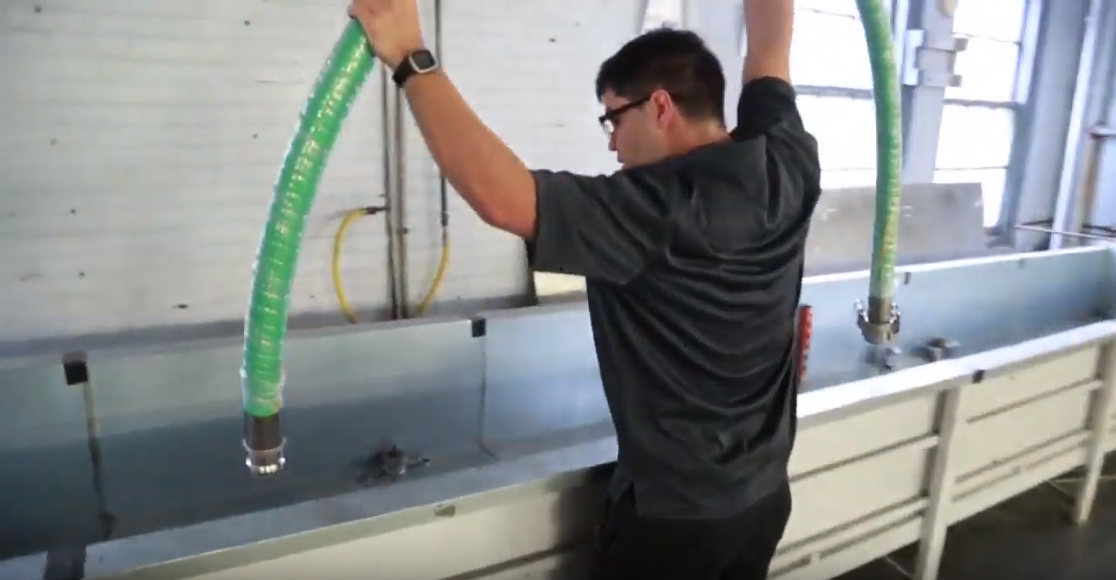Master the Art of Hose Replacement and Fabrication

Whether you’re looking to improve an existing machine or build something entirely new, mastering the art of hydraulic cylinder repair is key. From hoses, fittings, and pipes to seals and clamps, successful hydraulic maintenance requires a solid knowledge base for both diagnosis and repair, and all can be achieved with the right tools in hand.
Perfection isn’t mandatory when it comes to defining best practice; however, by understanding how hose fabrication and replacement work together as part of your everyday workflow processes, you can lower downtime costs while improving efficiency.
Identify hose types, sizes, and fittings that are compatible with your hydraulic cylinder.
When it comes to finding the right hose types, sizes, and fittings for your hydraulic cylinder, it can be overwhelming. However, understanding compatibility is crucial for ensuring that your system operates efficiently and safely.
When selecting a hose, it is essential to consider the pressure rating, the diameter, and the length to provide optimal flow and prevent equipment damage. Additionally, fittings need to match the hose and the cylinder ports to prevent leaks and ensure a tight connection.
It may take some research and consultation with hydraulic experts, but getting the right match will make all the difference in the performance and maintenance of your hydraulic system.
Learn how to measure and cut hoses accurately for a proper fit.
When it comes to automotive repairs or even home DIY projects, properly fitting hoses can make all the difference.
It’s frustrating to spend time and effort on a project only to find that the hose you cut is too short or won’t properly connect. Fortunately, measuring and cutting hoses accurately isn’t difficult.
By following a few simple steps, you can be sure that your hoses will fit perfectly every time. With the right technique, you’ll save yourself the headache of having to redo it later.
Understand the importance of securing metal fittings correctly when replacing a hose.
Proper maintenance and replacement of hoses are essential for the smooth operation of complex machinery. However, it’s equally important to ensure that metal fittings are securely fastened during the replacement process. Failure to do so could lead to significant damage and even catastrophic accidents, resulting in long downtime periods and costly repairs.
That’s why it’s crucial to understand the importance of securing metal fittings correctly when replacing a hose. Whether you’re an experienced technician or a seasoned professional, adherence to safety guidelines is critical to preventing accidents and ensuring that machinery operates efficiently and safely.
Always take the necessary precautions when replacing hoses and ensure that metal fittings are in good condition and securely fastened.
Become familiar with the specialized tools used in hose replacement and fabrication.
Replacing and fabricating hoses can be a challenging task, especially if you don’t have the right tools at your disposal. Specialized tools have been developed to make this process much easier and more efficient.
These tools include hose clamps, cutters, and crimpers. Hose clamps help secure the hose in place, while cutters allow you to neatly trim the ends of the hoses.
The crimpers, on the other hand, are designed to attach hose ends to fittings using high-pressure force. Getting familiar with these tools will not only save you time, but it will also ensure that your hoses are fitted securely and avoid any leaks. So, if you’re planning to replace or fabricate hoses, make sure you have these specialized tools handy.
Master the technique of prepping hoses before installation.
Installing hoses may seem like a simple task, but it’s important to properly prep them beforehand to ensure optimal functionality. There are a few crucial techniques to master when it comes to prepping hoses, and they can make a significant difference in the overall performance and longevity of the system.
One key aspect is checking the ends of the hose for any damage or deformities, as this can cause leaks and other issues down the line. Additionally, proper cleaning and lubrication can help prevent wear and tear on the hose, extending its lifespan.
Know the correct order of operations when replacing a hydraulic cylinder’s hoses.
Replacing hydraulic cylinder hoses can be a daunting task, but knowing the correct order of operations can make it much easier. First, turn off the power source to the hydraulic system and release any pressure from the cylinder. Next, remove any clamps or brackets holding the hoses in place and cap the ends of the hoses to prevent contamination. After that, disconnect the hoses from the cylinder and remove them completely.
Then, measure and cut the new hoses to the correct length and attach them to the cylinder, being sure to tighten all connections securely. Finally, remove the caps from the ends of the hoses and reattach any clamps or brackets.
In conclusion, this blog post delved into the specifics of hydraulic cylinder repair and hose replacement. You now have a better idea about the types of hoses, sizes, and fittings you need for your project. You are also familiar with some tools that can be used in hose fabrication and installation.
Additionally, your knowledge of proper measurement techniques has improved, as has your understanding of the importance of securing metal fittings correctly when replacing a hose.
Most importantly, you know the order in which to carry out processes while replacing hoses on hydraulic cylinders. Taking the time to do research is always beneficial; however, the more comprehensive your knowledge is beforehand, the more likely your hydraulic cylinder repair project will go off without a hitch!




























